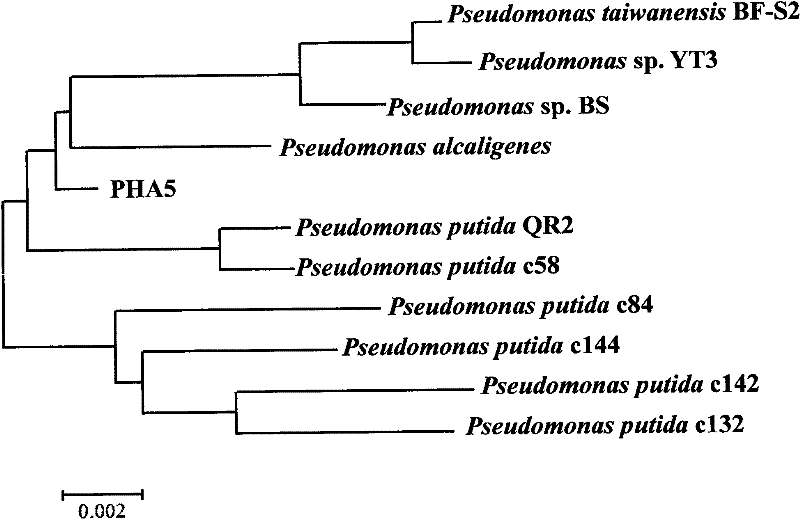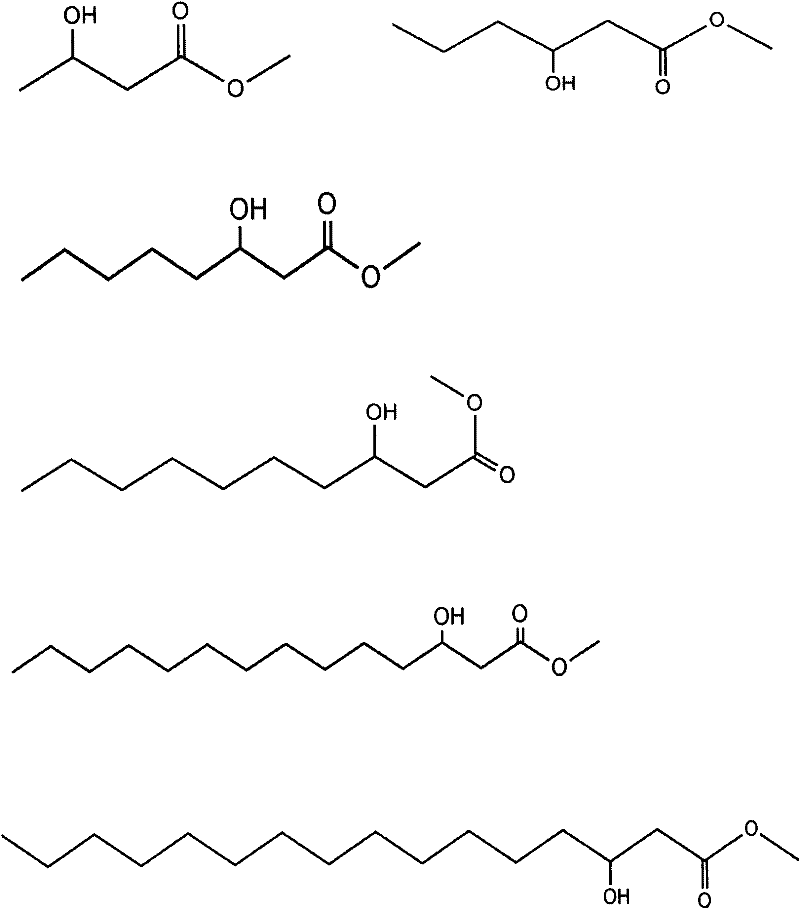Polyhydroxyalkanoate synthesis bacterium and its fermentation culturing method
A technology of polyhydroxyalkanoate and culture medium, applied in the field of polyhydroxyalkanoate synthetic bacteria and its fermentation culture, can solve the problems of high cost, unstable strain characteristics, difficult to control PHA, etc., and achieve simple synthesis conditions , excellent mechanical and processing properties, and broad application prospects
- Summary
- Abstract
- Description
- Claims
- Application Information
AI Technical Summary
Problems solved by technology
Method used
Image
Examples
Embodiment 1
[0022] Example 1 Screening and isolation of Pseudomonas lundensis PHA5
[0023] The experimental materials were selected from farmland soil in Xiqingfu Village, Tianjin.
[0024] The specific implementation steps are as follows: get 1g of remaining activated sludge, stir in 99ml of normal saline, let it stand, take the supernatant, dilute it with a 10-fold gradient with normal saline, and dilute it to 10 times respectively 3 -10 7 , take 10 3 -10 6 Spread on a solid screening medium plate, incubate at 30°C for 48 hours, observe under an ultraviolet analyzer, mark orange-red fluorescent colonies, pick the colony, streak on a solid screening medium plate for purification, and incubate at 30°C for 24 hours After 1 hour, the orange-red colonies were picked and stored in glycerol tubes. After 16S rDNA gene sequence analysis and BIOLOG identification, it was determined that the strain belonged to the genus Pseudomonas and the species lundensis, and it was named Pseudomonas lun...
Embodiment 2
[0025] Example 2 Synthesis of PHA by Fermentation of Pseudomonas lundensis PHA5
[0026] The specific steps are as follows: first, inoculate the strain into 5ml LB liquid medium, and culture it on a shaker at 30°C with a rotation speed of 180rpm. After culturing for 24 hours, inoculate it into the liquid fermentation medium according to the inoculation amount of 10%, shake the flask at 30°C Ferment for 48 hours. The fermentation broth was centrifuged, the supernatant was discarded, and the cells were collected and freeze-dried. Transfer the dried cells into an Erlenmeyer flask, add chloroform and stir thoroughly for 48 hours, remove the cell residue by filtration, concentrate the filtrate by rotary evaporation, add 40 times the volume of cold methanol to precipitate the PHA product, collect the precipitate, dry it in vacuum, and store it.
Embodiment 3
[0027] Example 3 Synthesis of PHA by Fermentation of Pseudomonas lundensis PHA5
[0028] The specific steps are as follows: first, inoculate the strain into 5ml LB liquid medium, and culture it on a shaker at 30°C with a rotation speed of 180rpm. After culturing for 24 hours, inoculate it into the liquid fermentation medium according to the inoculation amount of 10%, shake the flask at 30°C Ferment for 96 hours. The fermentation broth was centrifuged, the supernatant was discarded, and the cells were collected and freeze-dried. Transfer the dried cells into an Erlenmeyer flask, add chloroform and stir thoroughly for 48 hours, remove the cell residue by filtration, concentrate the filtrate by rotary evaporation, add 40 times the volume of cold methanol to precipitate the PHA product, collect the precipitate, dry it in vacuum, and store it.
PUM
 Login to View More
Login to View More Abstract
Description
Claims
Application Information
 Login to View More
Login to View More - R&D
- Intellectual Property
- Life Sciences
- Materials
- Tech Scout
- Unparalleled Data Quality
- Higher Quality Content
- 60% Fewer Hallucinations
Browse by: Latest US Patents, China's latest patents, Technical Efficacy Thesaurus, Application Domain, Technology Topic, Popular Technical Reports.
© 2025 PatSnap. All rights reserved.Legal|Privacy policy|Modern Slavery Act Transparency Statement|Sitemap|About US| Contact US: help@patsnap.com


